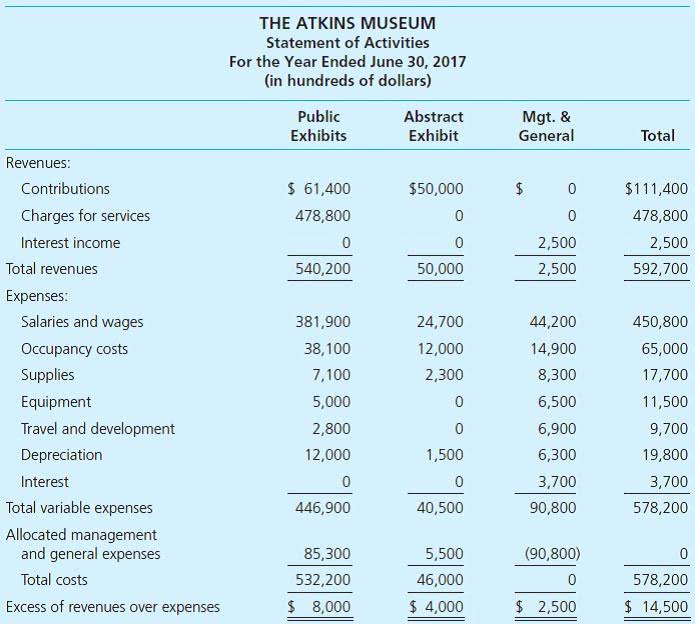
Contributed capital includes both common and preferred stock, while retained earnings represent the portion of a company’s profits that have not been paid out as dividends. As much as possible, you want to avoid drawing money out of your business unless your owner’s equity is positive. Taking money out of your business when owner’s equity is already negative puts your business at increased risk of becoming insolvent. If your business is organized as anything other than a sole proprietorship, you could also open yourself up to capital gains tax by withdrawing money in excess of your business’s equity. On the other hand, market capitalization is the total market value of a company’s outstanding shares.
What is owner’s equity?

In other words, owner’s equity is the amount of money your business owes you. However, the term “Owner’s Equity” is most commonly used in the context of a sole proprietorship—which is the simplest business structure—wherein the entity is managed https://www.bookstime.com/ by one business owner, like an entrepreneur. Simply put, the owner’s equity is the remaining value attributable to the owner in the event of a hypothetical liquidation, in which the leftover funds are returned to the business owner.
Owner’s Equity Calculation Example
It reflects the real value that you, as a business owner, have built up over time — a dynamic number that evolves with your business. In other words, it is the amount of money that belongs to the owners or shareholders of a business. This metric is a key component of a company’s financial statement analysis as it provides important information about the company’s financial position. Contributed capital refers to the funds that have been invested in a company by its owners or shareholders in exchange for equity. It represents the total amount of money that has been contributed to a company by its investors through the issuance of stock. This concept is important because it represents the ownership interest in a company and is a key metric for evaluating the financial health of a business.
Firm of the Future

In financial terms, owner’s equity represents an owner’s claim on the assets of their business, after all liabilities have been accounted for. In simpler terms, it’s the amount that remains for the business owner once all the business’s debts have been paid off. When a company has negative owner’s equity and the owner takes draws from the company, those draws may be taxable as capital gains on the owner’s tax return. For that reason, business owners should monitor their capital accounts and try not to take money from the company unless their capital account has a positive balance. When a business is organized as a corporation, the term used on the firm’s balance sheet is “stockholders’ equity.” For a small business such as a sole proprietorship or partnership, the term “owner’s equity” is used.
The Bottom Line on Owner’s Equity
A positive number indicates that your company has more assets than debts, while a negative number suggests more debts than assets. Shareholder’s equity is one of the financial how to find owners equity metrics that analysts use to measure the financial health of a company and determine a firm’s valuation. So his net owner’s equity is $1,500 at the end of the second month.

- The only difference between owner’s equity and shareholder’s equity is whether the business is tightly held (Owner’s) or widely held (Shareholder’s).
- The amount of the retained earnings grows over time as the company reinvests a portion of its income, and it may form the largest component of shareholder’s equity for companies that have existed for a long time.
- This is the amount of money that shareholders pay to acquire stock.
- So his net owner’s equity is $1,500 at the end of the second month.
- You want to maximize your business’s profits and minimize the amount of debt your business has.
- However, if a business piles up considerable losses instead of profits, its assets may not cover the full amount of its liabilities, i.e., negative owner’s equity.
The distinction in the usage of the term pertains more to the corporate structure of the business (and the applicable taxation policies). By submitting this form, you consent to receive email from Wall Street Prep and agree to our terms of use and privacy policy. We’ll now move to a modeling exercise, which you can access by filling out the form below.
- In other words, it is the amount of money that belongs to the owners or shareholders of a business.
- Where the value of the assets (on the left side of the balance sheet) equals the sum of the liabilities and owner’s equity (on the right side of the balance sheet).
- Some types of business, such as sole proprietors or partnerships, refer to owner’s equity.
- This is a private form of ownership—the sole proprietor, or owner, has possession of all the company’s equity.
- Corporations are formed when a business has multiple equity ownership, but unlike partnerships, corporation owners are provided legal liability protection.
The higher the owner’s equity, the stronger the financial position of the company. It is the amount of money that belongs to the owners or shareholders of a business. The term is often used interchangeably with shareholder equity or stockholders’ equity.

- The repayment of a business loan from a business bank account does not affect the owner’s equity because it reduces the total assets and total liabilities leaving the equity unchanged.
- Apple’s current market cap is about $2.2 trillion, so investors clearly think Apple’s business is worth many times more than the equity shareholders have in the company.
- This $2,000 amount is a capital contribution since Tom has contributed capital in the form of cash and property to the business.
- The formula for calculating owner’s equity involves subtracting total liabilities from total assets.
- The amount of treasury stock is deducted from a company’s total equity.
Remember, owner’s equity is what remains after your business’s liabilities are subtracted from its assets. If your owner’s equity is negative, that indicates liabilities exceed assets. It’s important to keep in mind that owner’s equity is a term used specifically for sole proprietorships. We’ll talk more about the terms used for partnerships and corporations later in this article.